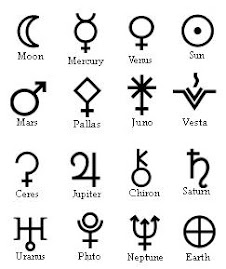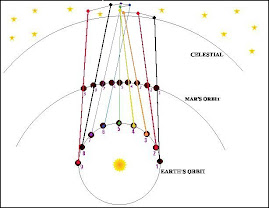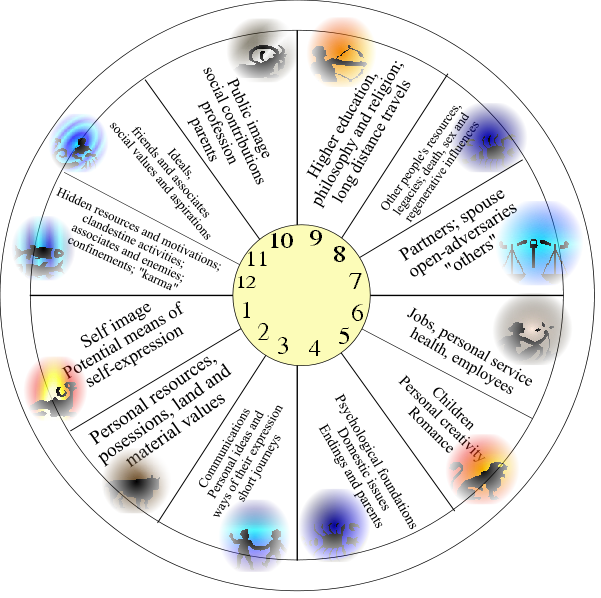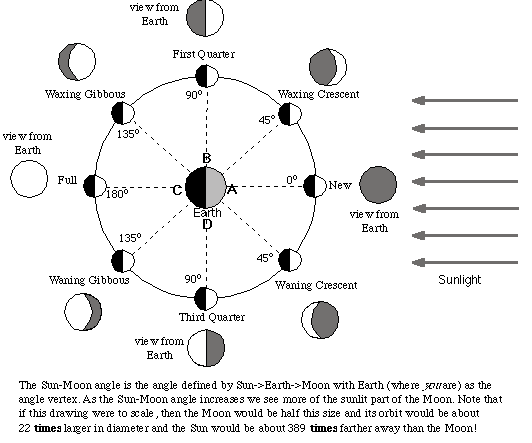Introduction
While astronomy deals primarily with the physical positions, dimensions, composition and motion of celestial bodies, astrology searches for the meaning in them by looking at them through the lens of symbolism. The existence of the Sun, Moon and the first five planets of the Solar System (i.e. Mercury, Mars, Venus, Jupiter, Saturn) is known to ancient man before the invention of the telescope. To the astrologer each planet represents more than just a celestial body. Rather it has a core symbolism which carries multiple layers of meanings derived from the core principle.
The Luminaries - Sun, Moon
Since ancient times, the Sun has been viewed with awe. Its shining light provides the life force and vitality necessary for growth and activity of all living things. When it sets, the mystical Moon takes over and shows the reflected light from the Sun. Together, these two bodies are known as the Luminaries.
The Sun and the Moon are polar opposites in astrology. They represent the psychological male-female principle in us. They are also associated with the harmonious balance of emotions in our psychological environment. This is classically known as the Yin-Yang principle in Chinese metaphysics. Their relationship to each other varies constantly with the Lunar Cycle and is important in shaping our core personalities.
The Personal Planets - Mercury, Venus, Mars
The first three planets of the Solar System (i.e. Mercury, Venus, Mars) are known as the personal planets in astrology. This is partly because their symbolism pertain to fundamental human urges. The first planet, Mercury, represents our urge to make connections. It carries the name of a Roman god who is the equivalent of the Greek Hermes. In fact the Greeks regard both the planets and their respective gods as psychological entities. Hermes is a multi-talented deity who is witty, clever with language and his hands and with travel. He moves freely between the living and the underworld and is known for his role as a messenger. Hence Mercury has come to symbolize mental activity, intelligence, communication and craftsmanship.
The second planet, Venus symbolizes the urge to make relationships. It is associated with two Greek goddesses, Aphrodite and Athena. Aphrodite is a symbol of beauty, love, sensuality and luxury. Athena on the other hand, is associated with peace, harmony, balance, wisdom and appreciation of artistic values. In the birth chart, the position of the planet Venus tells us about the individual's romantic inclinations and artistic talents.
Mars is a warrior god. The Romans honoured his spirit of courage, strength, sportsmanship and military discipline. In the natal chart it represents the nature of one's driving force, fighting spirit, assertion and anger. It tells us how easy or how difficult one shows up his anger and his manner of managing conflict.
The Social Planets - Jupiter, Saturn
Jupiter and Saturn ar known as the social or interpersonal planets because they are perceived to link us with our larger society and concepts beyond our individual confines. Being the largest planet of the Solar System, Jupiter's symbolism has been passed down as abundance, excess, optimism and good luck. In the birth chat, it tells us the urge of the individual to broaden his horizons and how he develops his philosophical and religious beliefs. If well placed in the chart, it can represent a positive outlook in life and an ability to take advantage of opportunities.
Saturn, by virtue of the fact that it is the outermost planet visible to the naked eye, has come to be associated with boundaries, limitations, restriction and death. The Saturn archetype is traditionally considered as negative, undesirable or evil. Its position in the natal chart often denotes the principle of fear and a perception o9f where one may fail in his life.
The Outer Planets - Uranus, Neptune, Pluto
Discovered only after the invention of the telescope in the 16th century, the outer planets (i.e. Uranus, Neptune and Pluto) have come to be associated with Modern Astrology. They are also known as the transpersonal or generational planets. Because of their wide orbits they take many years to move through each of the zodiac signs. Uranus stays for about 7 years in a sign, Neptune 14 years and Pluto about 20 years. Hence, in a natal chart, the sign the outer planets occupy is more descriptive of generational rather than personal issues. On the other hand, the houses they occupy would ground them on more personal issues.
At a personal level, Uranus indicates the impulsiveness, detachment and the area of life in which the individual may be eccentric. Neptune is involved with the individual's urge for sacrifice and redemption. Pluto, on the other hand is indicative of hidden power, change and transformation. These three planets have a strong role in the symbolism surroudning one's midlife crisis.
Subscribe to:
Post Comments (Atom)















No comments:
Post a Comment